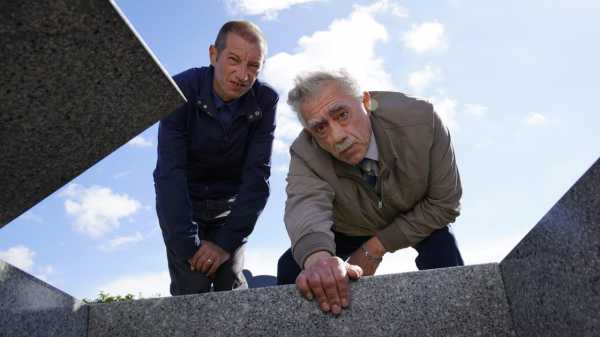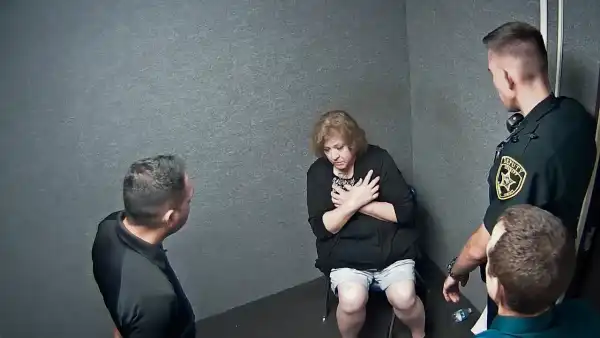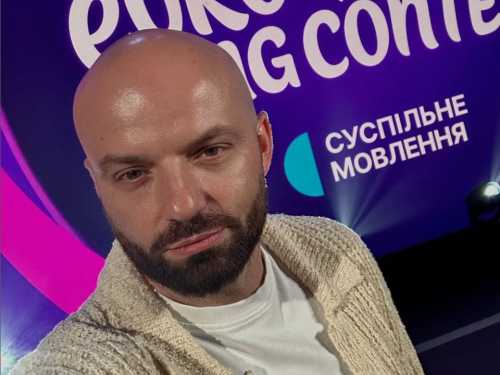
In the wake of “Sorry to Bother You” and “BlacKkKlansman,” if it isn’t yet clear that politics and fantasy and analysis and imagination can be mutually reinforcing, “Coincoin and the Extra-Humans,” a new, three-and-a-half-hour film by Bruno Dumont (cut into four segments for its original broadcast, on French television), provides extravagant evidence. (It screens this Sunday, in Lincoln Center’s Rendez-Vous with French Cinema series.) It’s a radically loopy, politically confrontational, grandly geographical, infinitesimally detailed transfiguration of familiar police-investigation dramas, and to merely describe it in broad strokes is to give proof of Dumont’s profuse imagination and symbolic ingenuity.
“Coincoin,” a sequel to his 2014 series, “Li’l Quinquin,” follows the same protagonists, played by the same actors, in the same wide-open, windswept, seaside farm village on the northern coast of France. The title character of “Li’l Quinquin” (played by Alane Delhaye), a taciturn, pugnacious, vulnerable farm boy who’s now a grown teen-ager in “Coincoin,” wanders into a field and finds a sticky, blue puddle that’s like no puddle he’s ever seen. Soon, two crazy-quilt police detectives from “Li’l Quinquin”—the voluble, twitchy, muddled-yet-philosophical captain, Van Der Weyden (Bernard Pruvost), with his gray brush mustache and tangle of gray hair, and his blank-faced, puckish young officer Carpentier (Philippe Jore)—are joined by hazmat-suited forensic investigators, who determine that the puddle is a substance from outer space.
It’s impossible to go further without a spoiler, which I practically define as something that I was glad not to have known in advance and to have discovered in the course of viewing. To wit: blue splats from space begin to fall on the town at a rapidly increasing rate—and they seem to target individuals, who, after, they get splotched, are apt to spawn doubles, clones (or, as Van Der Weyden says, in a malapropism that works as well in English as in French, “clowns”) of themselves. This plot point is essential to any substantial discussion of the film, because it’s also the movie’s central metaphor, a phantasmagorical image of the idea on which it runs: the notion of identity. The region is in the grips of a political party called the Bloc—to all appearances a far-right, racist, and nationalist party—with which Coincoin and his friend, the motorbike-riding Fatso (Julien Bodard), are involved.
Casual, unchallenged racism and Islamophobia in the village were central themes of the earlier series; the hardly adolescent Quinquin and his friends hassled, insulted, and fought local residents of color, with tragic results. Now national and international politics have come to the fore in the seemingly isolated region: there’s a part of the village that’s a shantytown, inhabited by black and brown people, who, when seen walking around by Van Der Weyden, arouse his suspicions and give rise to his muttered imprecations—his jokes about their being as “extraterrestrial” to France as the blue gunk is, and his threats of violence as he chases them off with gunshots fired into the air. There’s also the nearby city of Calais, where the presence of refugees is a pretext for young Bloc members’ racist aggression.
Meanwhile, to Coincoin’s despair, Eve (Lucy Caron), Quinquin’s lifelong love from the series, whose family owns a farm just across the road, is now in a relationship with another young woman, whom Van Der Weyden mistakes for a young man (expressing his bewilderment offensively). Coincoin instead gets involved with Jenny (Alexia Depret), whose father is a leader of the Bloc, and who strolls around her trailer-park-cum-campgrounds carrying a handbag bearing the design of the French flag. (It’s a mark of Dumont’s uncanny blend of realism and symbolism that the teen-agers’ trysting ground is a hill beside the open pools of a sewage-treatment plant.)
Dumont, who’s from this part of France in real life, films it with a fierce intimacy of portraiture, geography, and mentality; it’s as much a film of landscape as of politics. He films with a wide-eyed avidity, a variety of tragic wonder that’s captured in poised widescreen images that are suffused with painterly northern sunlight. “Coincoin” is a daytime movie (with only a few, brief night scenes) and an outdoor movie—a film about the public sphere and the civic realm in the most literal sense. It takes place entirely outdoors—there isn’t a single scene set in a home, an office, a café, a restaurant, or a barn. The characters’ inner conflicts, domestic troubles, and reflective intimations take shape publicly, in the literal and figurative light of day, in actions and expressions that have immediate societal consequences.
Yet, the social tragedy of the practice and the politics of hate is matched by the absurdity of its avatars, as in Van Der Weyden’s garbled philosophical misadventures with language. (Such phrases as “state of emergency” and “It’s the apocalypse” leap out with acerbic urgency.) The closest things to interior scenes are set inside a police car in which Van Der Weyden and Carpentier roam the region, as Carpentier amuses himself and the locals by pulling wheelies on the vehicle’s two left tires and stopping with sudden and dramatic spinouts. Alongside the machinations of the Bloc, the town’s organized civic life is centered on a summer carnival, with grotesque papier-mâché heads and elaborate costumes appearing in the course of the conflict-riddled doings.
Even the very premise, of the town’s outer-space invasion from within, by its residents’ doubles, becomes, in addition to a metaphor about self-uncertainty challenging the excessive certainty of identity, a source of exquisitely timed acrobatic comedy, of deft evasions and narrow escapes. The physical comedy of “Coincoin” is heralded by a riotous cinephilic wink—an unintentional maneuver, in Coincoin’s family courtyard, by his developmentally and physically disabled uncle, that’s a virtual visual quote from Buster Keaton. There’s also some macabre cemetery humor, also borrowed from cinema classics, that’s both too good to spoil and as politically and symbolically potent as are its original sources. Finally, there’s also a Hitchcockian touch—acknowledged as such by the characters who observe it—that also whiplashes around to deliver an outrageous dose of Hitchcockian philosophy regarding the pervasive and relentless power of evil.
With “Coincoin,” Dumont mashes up genres, tones, and influences and unifies them into a distinctive cinematic universe that’s intensely personal and solidified through his precision of observation and depth of insight. From the perspective of a single village, and the fantasies and enigmas that it inspires, Dumont gets close to the explosive core of contradictions, the psychic magma of history beneath the surface of daily life. He embraces and dramatizes the metaphysical comedy and calamity of social life, the inescapable and incalculable weight of the past in the present, the ineluctable and universal panic of searching for oneself in public, in the essential realm of the other. For all its political specificity to current-day France, Dumont’s film is also a philosophy of aesthetics—a vision of society that is inseparable from artistic experience and imaginative transformations.
Sourse: newyorker.com






